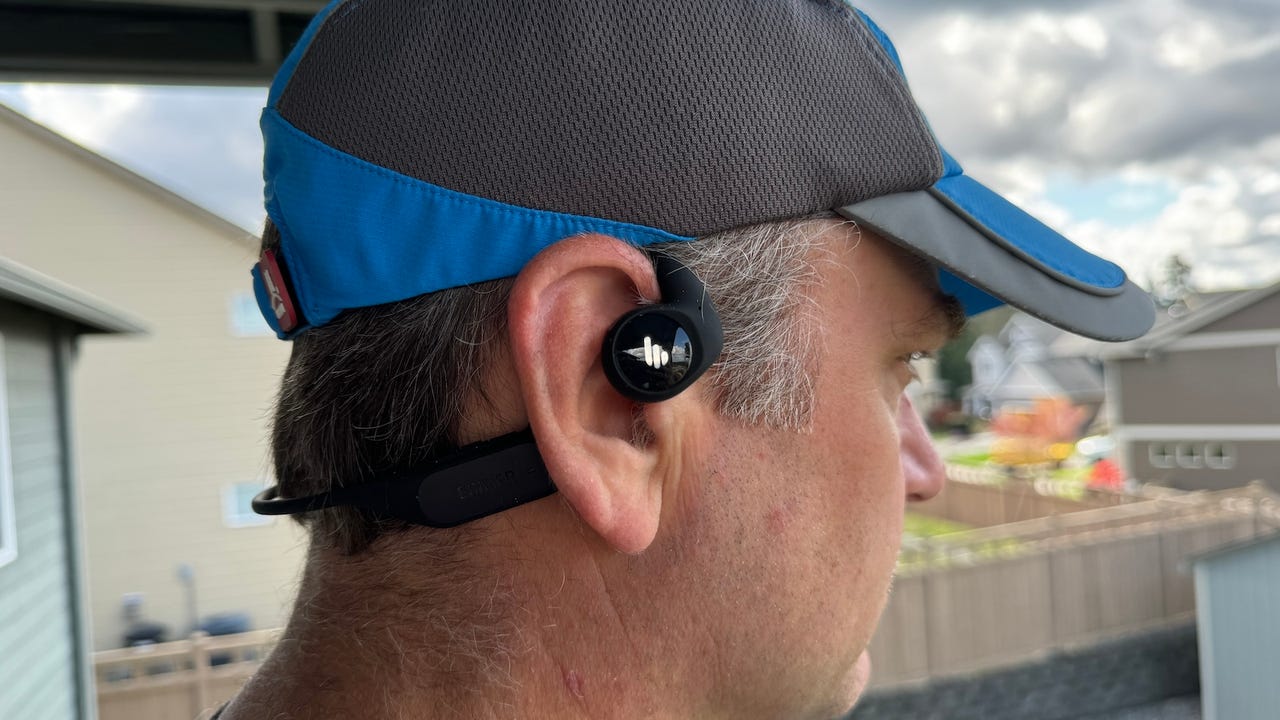
































Bone conduction headsets offer a way to enjoy music while maintaining a high level of awareness of your surroundings. However, some people don't like the vibration associated with the bone conduction technology or some headsets' lower volume and bass levels. Lately, we have seen more headphones launching with an open ear form factor similar to bone conduction headsets but with traditional speakers directed towards your ears.
Also: The best sports watches you can buy
These more traditional open-ear headsets that do not use bone conduction can be found for under$100 (or even under$40). For the past couple of weeks, I have been working out with theEdifier Comfo Run wireless sports headphones which cost just$80.
View at AmazonI still use earbuds that go into my ear canals for active noise cancellation experiences during airplane travel and when I want to focus while working in the office, but I only run and bike with open ear headsets. Bone conduction technology does not bother me, but most such headsets cost$150 to$250.
Also: My favorite bone conduction headphones for swimming just got a major audio upgrade
The Edifier Comfo Run is covered in soft silicone material and a neckband that does not apply any significant force to the back of your neck. The headset fits comfortably over your ears and stays securely in place while you engage in various workouts. I also tried the Edifier Comfo Run with sunglasses on and the headset remained securely in place. The headset is rated for IP55 dust and splash resistance so you can exercise outside without much worry.
16.2mm dynamic drivers provide great audio performance even without bone conduction technology. The large speaker grills are directed to provide excellent audio volume and with the Edifier ConneX smartphone app you can even toggle on more bass if that is your preference.
The smartphone app can also be used to launch the pedometer functionality, but since it doesn't connect to Apple Health, Google Fit, or other services, I found this capability to be limited to those who simply want to use ConneX for step counting. The app is also used to manage any firmware updates for the headset.
This type of form factor has a major advantage over earbuds: longer battery life. The Edifier Comfo Run can provide up to 17 hours of playtime, far exceeding any earbud battery life on the market. It also charges rather quickly with the USB cable and magnetic connector. 15 minutes of charging can provide up to five hours of playback.
Also: These$36 headphones are my new budget pick when exercising
Because these type of headsets are designed for working out, phone calls are generally not a focus, but the two mics and beamforming algorithms performed well during my test calls. You can also use the mics to activate your phone or watch voice assistant, which can be handy for controlling your connected device while on a run, walk, or bike ride.
There are three buttons on the top of the right side, positioned behind your ear. These buttons control volume, power, phone calls and your voice assistant. The center button is the primary controller with one, two, three, and five presses, along with long press and hold actions, controlling various functions. It takes a bit of practice to learn all of the functions so you'll want to check out the user manual for all of the details.
For the past few years I have been exercising with bone conduction headphones, but these new affordable open ear options are compelling at less than half the cost. TheEdifier Comfo Run offers everything I need in a headset, especially with the long battery life and flawless Bluetooth performance.
Headphones can be an expensive accessory for adding to your workout kit, but Edifier offers a compelling option for$80. If you are tired of losing your earbuds when you're active, want to be more aware of your surroundings, or want a pair of headphones that lasts for all of your workouts during the week, then you might want to consider theEdifier Comfo Run . I haven't found anything missing and enjoy the security of the neckband open ear form factor.
 Hot Tags :
Tech
Wearables
Headphones
Hot Tags :
Tech
Wearables
Headphones